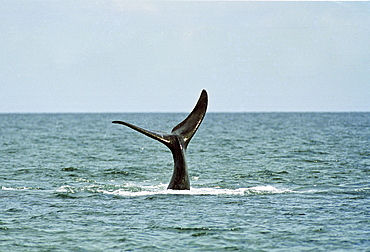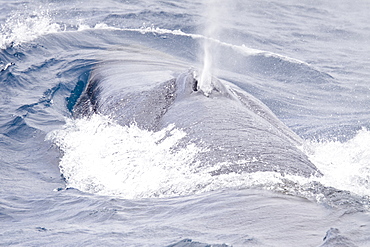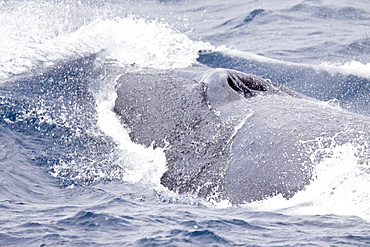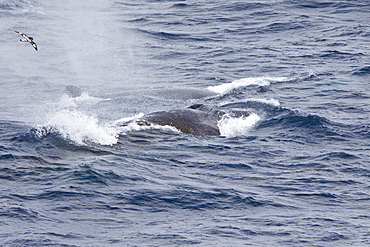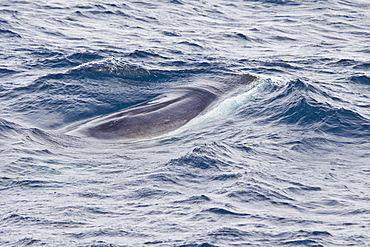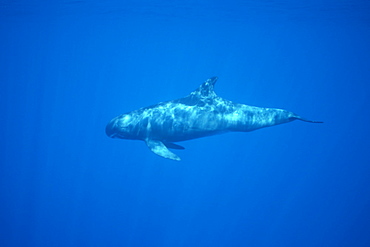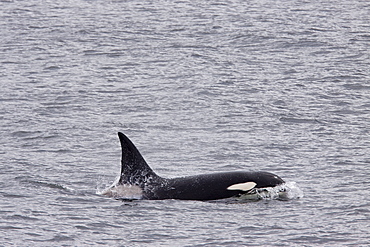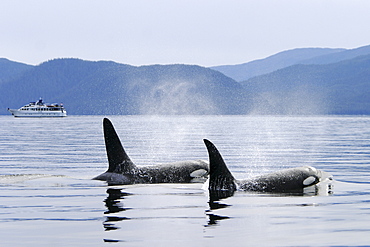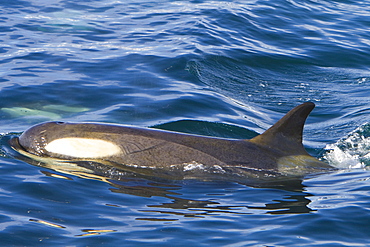Results
« Previous 1 2
120 results found
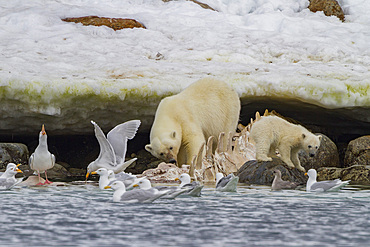
A mother polar bear (Ursus maritimus), and cub of the year feeding on a fin whale carcass in Holmabukta in the Svalbard Archipelago, Norway
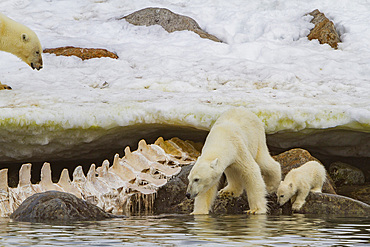
Two mother polar bears (Ursus maritimus) with cubs of the year watch a male bear feeding on a fin whale carcass in Svalbard, Norway
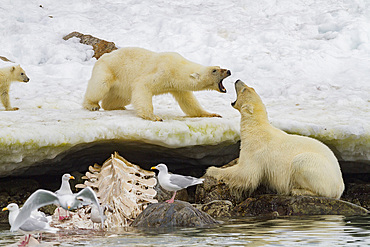
Mother polar bear (Ursus maritimus) and cub-of-the-year disputing then allowing a male bear to feed on a fin whale, Svalbard Archipelago, Norway
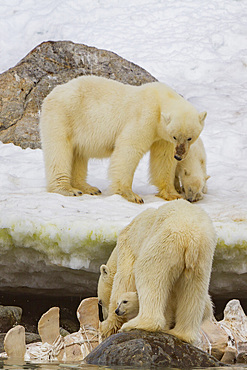
Two mother polar bears (Ursus maritimus) with cubs of the year watch a male bear feeding on a fin whale carcass in Svalbard, Norway
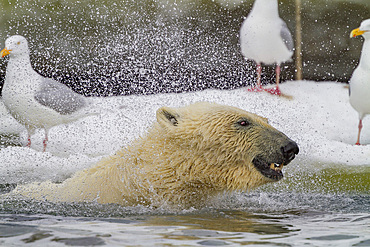
Young male polar bear (Ursus maritimus), shaking its fur, feeding on a fin whale carcass in Holmabukta in Svalbard, Norway
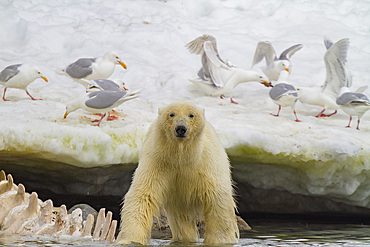
Young male polar bear (Ursus maritimus), feeding on a fin whale carcass in Holmabukta in the Svalbard Archipelago, Norway
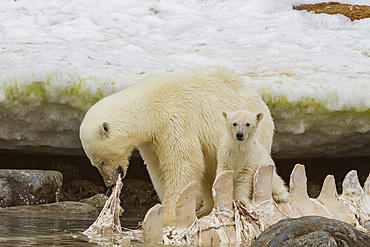
A mother polar bear (Ursus maritimus), with cub of the year feeding on a fin whale carcass in Holmabukta, Svalbard, Norway
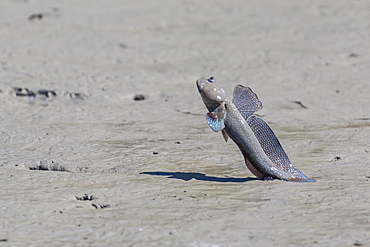
An adult male mudskipper, subfamily Oxudercinae, displaying to other males on the Hunter River, Kimberley, Western Australia, Australia, Pacific
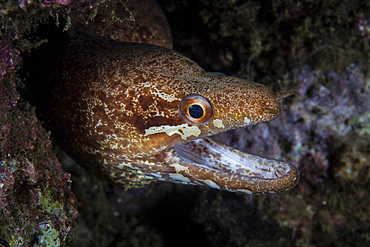
A barred-fin moray eel, Gymnothorax zonipectus, is found on a coral reef in Komodo National Park, Indonesia.
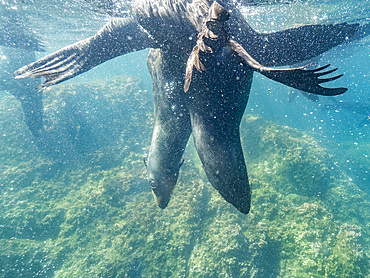
Guadalupe fur seals (Arctocephalus townsendi), underwater on Las Animas Island, Baja California Sur, Sea of Cortez, Mexico, North America
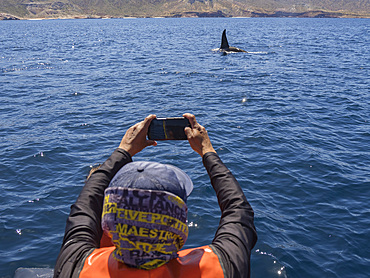
Killer whale pod (Orcinus orca), ad tourist off Punta Colorada, Isla San Jose, Baja California Sur, Mexico, North America
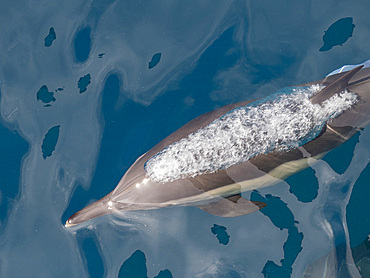
A long-beaked common dolphin (Delphinus capensis), surfacing off Gorda Banks, Baja California Sur, Mexico, North America
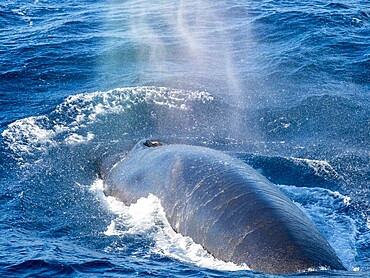
Adult fin whale (Balaenoptera physalus), feeding on krill near Coronation Island, South Orkney Islands, Antarctica, Polar Regions
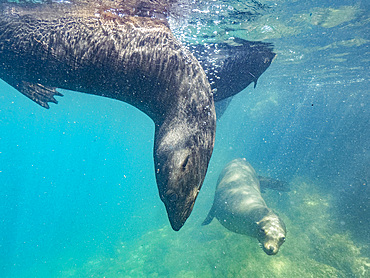
Guadalupe fur seals (Arctocephalus townsendi), underwater on Las Animas Island, Baja California Sur, Sea of Cortez, Mexico, North America
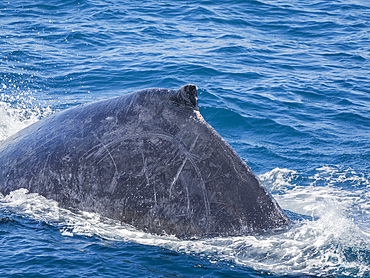
Humpback whale (Megaptera novaeangliae), surfacing off San Jose del Cabo, Baja California Sur, Mexico, North America
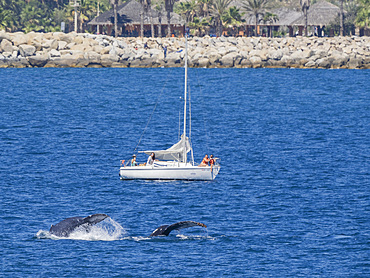
Humpback whales (Megaptera novaeangliae), near tourist boat off San Jose del Cabo, Baja California Sur, Mexico, North America
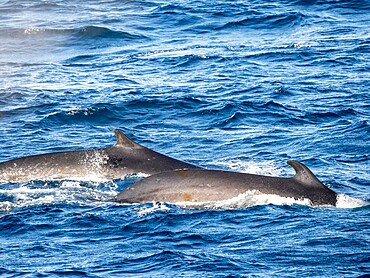
Adult fin whales (Balaenoptera physalus), feeding on krill near Coronation Island, South Orkney Islands, Antarctica, Polar Regions
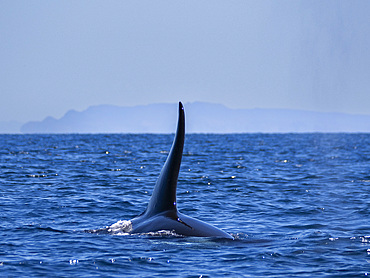
Killer whale pod (Orcinus orca), off Punta Colorada, Isla San Jose, Baja California Sur, Mexico, North America
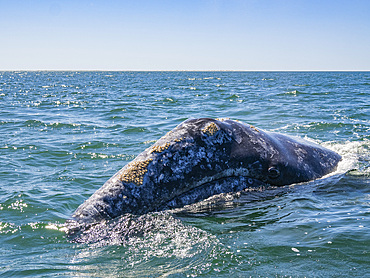
Adult California gray whale (Eschrictius robustus), surfacing near boat in San Ignacio Lagoon, Baja California, Mexico, North America
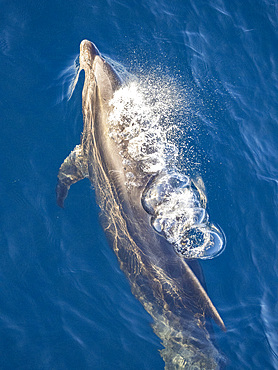
Bottlenose dolphin (Tursiops truncatus), surfacing in Cabo Pulmo National Marine Park, Baja California Sur, Mexico,, North America
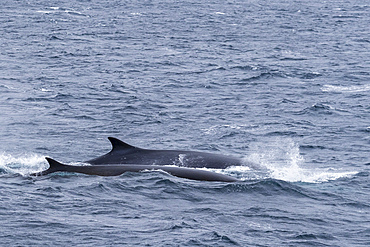
A pair of adult fin whales (Balaenoptera physalus), surfacing off Point Wild, Elephant Island, Antarctica, Polar Regions
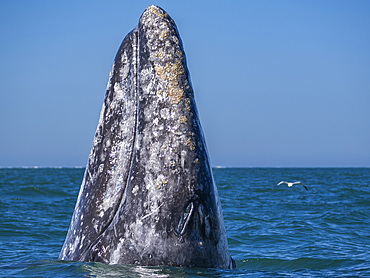
Adult California gray whale (Eschrictius robustus), spy-hopping in San Ignacio Lagoon, Baja California, Mexico, North America
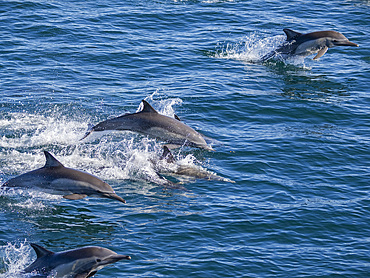
A long-beaked common dolphin pod (Delphinus capensis), traveling off Gorda Banks, Baja California Sur, Mexico, North America
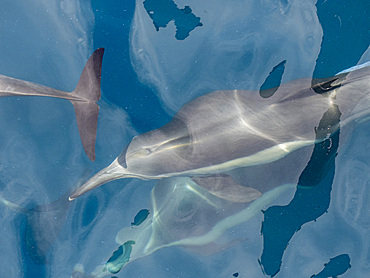
A long-beaked common dolphin (Delphinus capensis), surfacing off Gorda Banks, Baja California Sur, Mexico, North America

A pair of long-beaked common dolphins (Delphinus capensis), surfacing off Gorda Banks, Baja California Sur, Mexico, North America
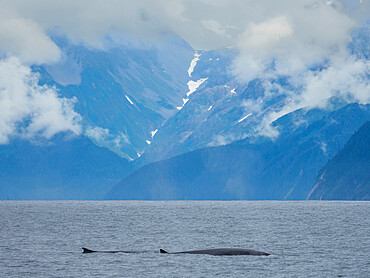
A pair of adult fin whales (Balaenoptera physalus) surfacing in Kenai Fjords National Park, Alaska, United States of America, North America
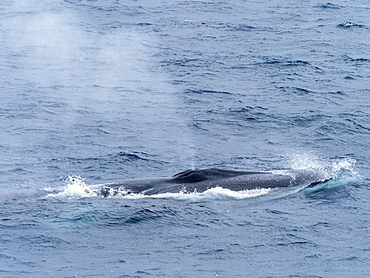
Adult fin whale (Balaenoptera physalus), surfacing near Point Wild, Elephant Island, Antarctica, Polar Regions
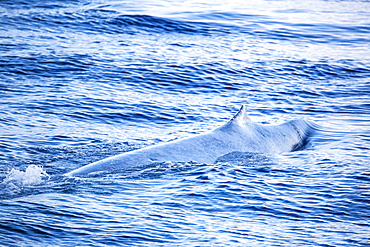
A single adult blue whale (Balaenoptera musculus) surfacing in deep water off Funchal, Madeira, Portugal, Atlantic, Europe
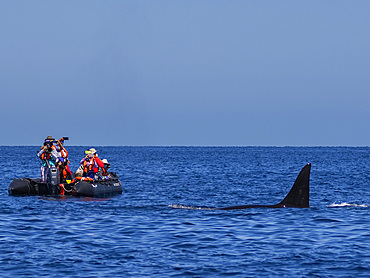
Killer whale pod (Orcinus orca), beside tourists in inflatables off Punta Colorada, Isla San Jose, Baja California Sur, Mexico, North America
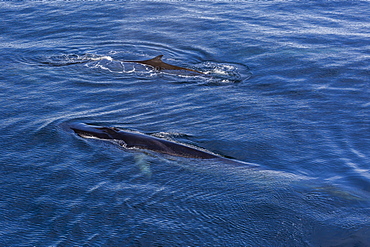
Possible cow and calf fin whale (Balaenoptera physalus) surfacing near Hornsund, Spitsbergen, Svalbard, Arctic, Norway, Scandinavia, Europe
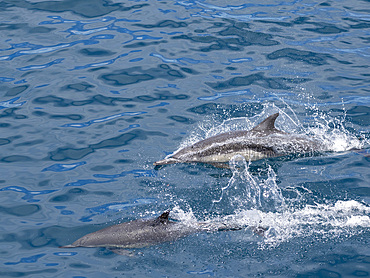
A pair of long-beaked common dolphins (Delphinus capensis), surfacing off Gorda Banks, Baja California Sur, Mexico, North America
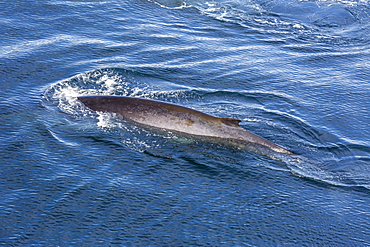
Adult fin whale (Balaenoptera physalus) surfacing near Hornsund, Spitsbergen, Svalbard, Arctic, Norway, Scandinavia, Europe
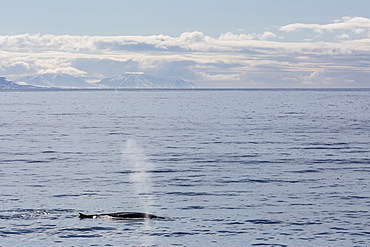
Adult fin whale (Balaenoptera physalus) surfacing near Hornsund, Spitsbergen, Svalbard, Arctic, Norway, Scandinavia, Europe
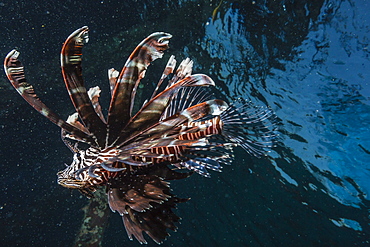
Common lionfish (Pterois volitans) at night near the dock of the Komodo Island Diving Resort, Sebayur Island, Komodo Island National Park, Indonesia, Southeast Asia, Asia
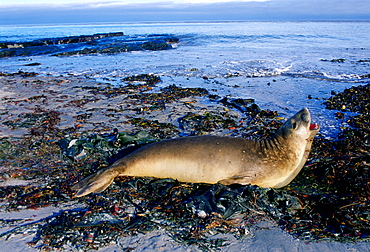
A young Southern Elephant Seal (Mirounga leonina) lying open-mouthed amongst the seaweed on the shores of Sea Lion Island, Falkland Islands, South Atlantic.
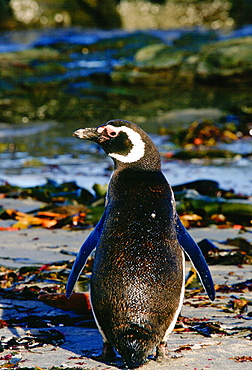
Magellanic Penguin showing natural oil on its feathers at Sea Lion Island, Falkland Islands, South Atlantic.

A small pod of 8 Type B killer whales (Orcinus nanus) in pack ice near Snow Hill Island Island, Weddell Sea, Antarctica, Southern Ocean
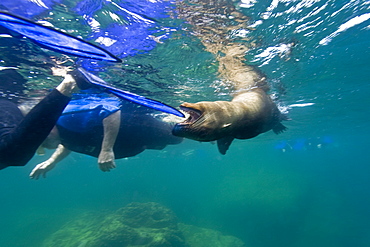
California sea lion (Zalophus californianus) biting swim fins underwater at Los Islotes (the islets) just outside of La Paz, Baja California Sur in the Gulf of California (Sea of Cortez), Mexico.
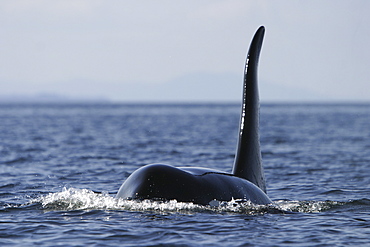
Adult bull Orca - also called Killer Whale - (Orcinus orca) surfacing in the calm waters of Southeast Alaska, USA. Note the exceptionally tall dorsal fin - the field diagnostic for a mature male Orca.
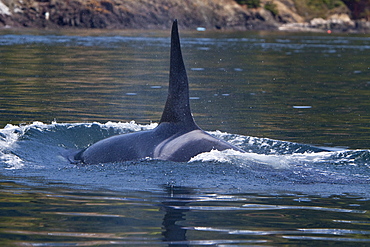
Excited whale watchers on shore see all three resident killer whale (Orcinus orca) pods off Lime Kiln lighthouse, San Juan Island, Washington State, USA
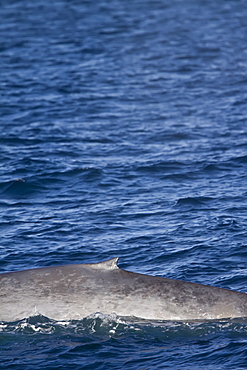
Adult blue whale (Balaenoptera musculus) surfacing (note tiny dorsal fin) in the middle Gulf of California (Sea of Cortez), Baja California Sur, Mexico
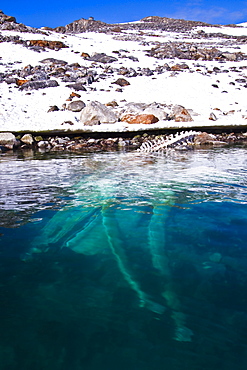
Adult fin whale (Balaenoptera physalus) carcass in Holmabukta off the northwest side of Spitsbergen in the Svalbard Archipelago, Norway
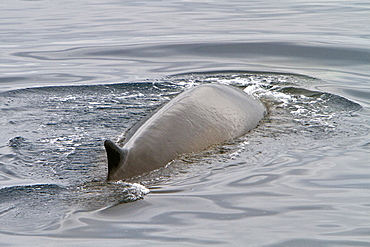
Adult fin whale (Balaenoptera physalus) sub-surface feeding in the rich waters off the continental shelf, Spitsbergen, Svalbard Archipelago, Norway
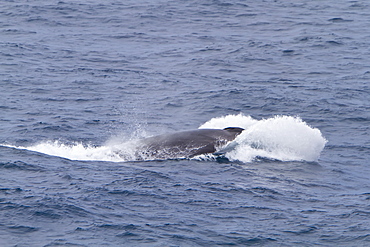
Adult Fin Whale (Balaenoptera physalus) power lunging in the Drake Passage between South America and the Antarctic Peninsula, Southern Ocean
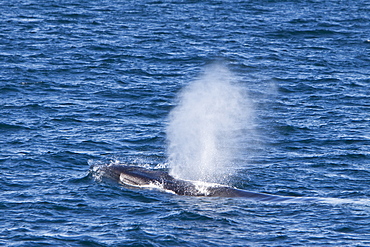
Adult fin whale (Balaenoptera physalus) sub-surface feeding in the rich waters off the continental shelf on the west side of Spitsbergen Island in the Barents Sea, Norway
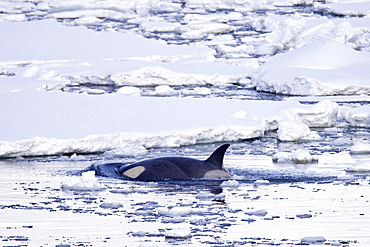
A small pod of 6 to 8 Type B killer whales (Orcinus nanus) in dense first year sea ice south of the Antarctic Circle near Adelaide Island, Gullet, Antarctica, Southern Ocean
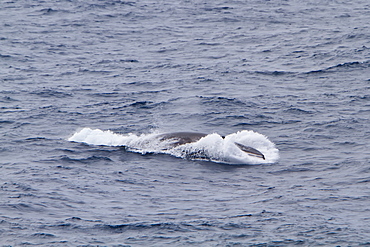
Adult Fin Whale (Balaenoptera physalus) power lunging in the Drake Passage between South America and the Antarctic Peninsula, Southern Ocean
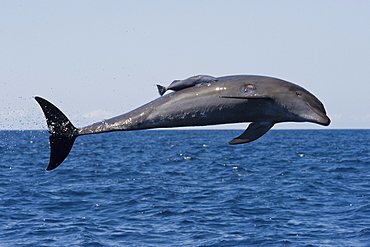
Common Bottlenose Dolphin, Tursiops truncatus, breaching right in front of the photographer. Note the scar above the right pectoral flipper which has been caused by the Remora. Costa Rica, Pacific Ocean.
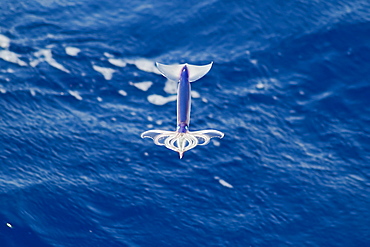
Flying Squid Species in mid-air, roughly 100 nm North of Tristan Da Cunha, South Atlantic Ocean. Flying Squid use membranes between their tentacles (visible on pic) & two fins at the rear of the mantle to glide through the air in a similar way to flying fish.
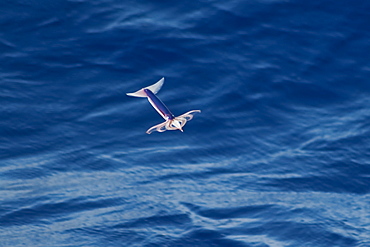
Flying Squid Species in mid-air (Ommastrephes bartramii). Extremely rare unusual image. South Atlantic Ocean. MORE INFO: Flying Squid use membranes between their tentacles (visible on pic) & two fins at the rear of the mantle to glide through the air in a similar way to flying fish. These unique adaptations allow them to avoid predation more easily. Ommastrephid squids are among the strongest swimmers in the Cephalopoda. A number of species are fished commercially. This particular species (Ommastrephes bartramii), is commonly known as "Neon Flying Squid" due to its colouration and its ability to glide over the ocean surface as seen in the photographs. Please note that this is a genuine image of a wild animal in its natural environment. It is not a digital manipulation.
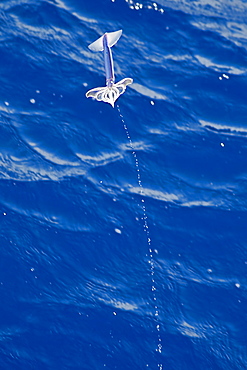
Flying Squid Species in mid-air leaving a water trail behind it, roughly 100 nm North of Tristan Da Cunha, South Atlantic Ocean. Flying Squid use membranes between their tentacles (visible on pic) & two fins at the rear of the mantle to glide through the air in a similar way to flying fish.
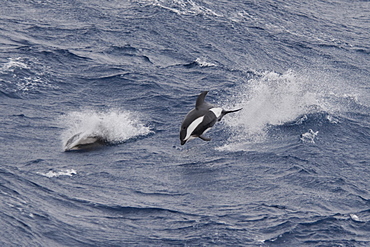
Hourglass Dolphin, Lagenorhynchus cruciger, Male Dolphin breaching at great speed, Drake Passage, Southern Ocean. Males of this species can be identified by the huge hooked dorsal fin and post-anal keel.
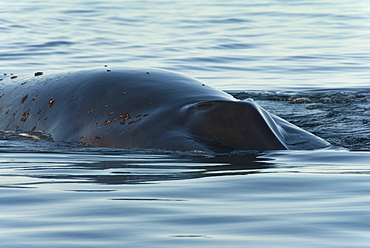
Fin whale (balaenoptera physalus) The head of a fin whale and barnacles attached.Gulf of California.
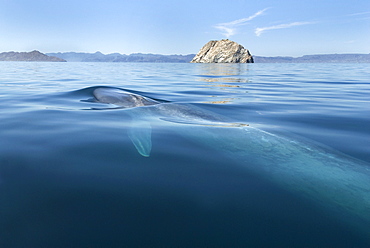
Blue whale (balaenoptera musculus) A surfacing blue whale showing the pectoral fin. Gulf of California.
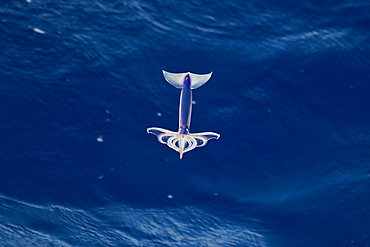
Flying Squid Species in mid-air, roughly 100 nm North of Tristan Da Cunha, South Atlantic Ocean. Flying Squid use membranes between their tentacles (visible on pic) & two fins at the rear of the mantle to glide through the air in a similar way to flying fish.
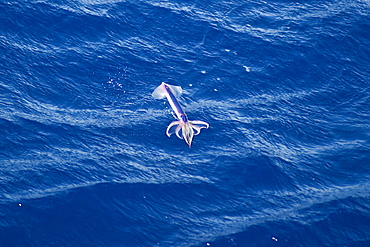
Flying Squid Species in mid-air, roughly 100 nm North of Tristan Da Cunha, South Atlantic Ocean. Flying Squid use membranes between their tentacles (visible on pic) & two fins at the rear of the mantle to glide through the air in a similar way to flying fish.
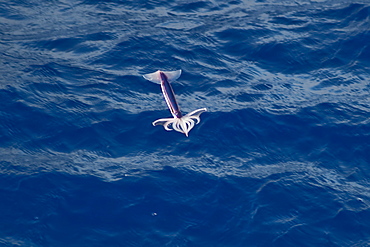
Flying Squid Species in mid-air (Ommastrephes bartramii). Extremely rare unusual image. South Atlantic Ocean. MORE INFO: Flying Squid use membranes between their tentacles (visible on pic) & two fins at the rear of the mantle to glide through the air in a similar way to flying fish. These unique adaptations allow them to avoid predation more easily. Ommastrephid squids are among the strongest swimmers in the Cephalopoda. A number of species are fished commercially. This particular species (Ommastrephes bartramii), is commonly known as "Neon Flying Squid" due to its colouration and its ability to glide over the ocean surface as seen in the photographs. Please note that this is a genuine image of a wild animal in its natural environment. It is not a digital manipulation.
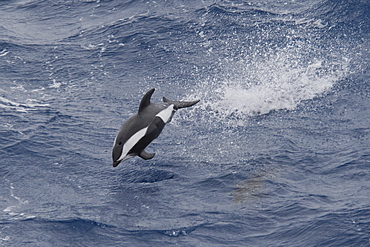
Hourglass Dolphin, Lagenorhynchus cruciger, Male Dolphin breaching at great speed, Drake Passage, Southern Ocean. Males of this species can be identified by the huge hooked dorsal fin and post-anal keel.
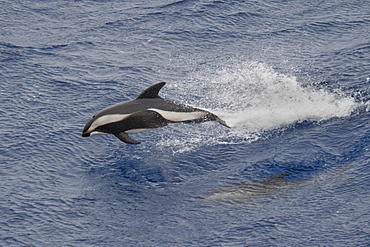
Hourglass Dolphin, Lagenorhynchus cruciger, Female Dolphin porpoising, Drake Passage, Southern Ocean. Females of this species can be identified by the smaller less-hooked dorsal fin and the lack of a post-anal keel.

Hourglass Dolphin (Lagenorhynchus cruciger) rare unusual image, adult Male porpoising. Drake Passage, Southern Ocean. MORE INFO: Males of this species can be identified by the huge hooked dorsal fin and post-anal keel, both of which are visible on this animal.
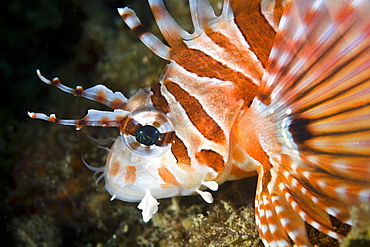
Zebra lionfish (Dendrochirus zebra) Adult animal displaying colo Gangga Island North Sulawesi Indonesia Pacific Ocean. More info: Like all lionfish this species has toxins associated with its dorsal and pectoral
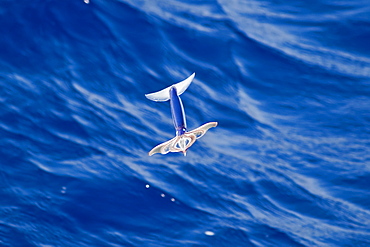
Flying Squid Species in mid-air, roughly 100 nm North of Tristan Da Cunha, South Atlantic Ocean. Flying Squid use membranes between their tentacles (visible on pic) & two fins at the rear of the mantle to glide through the air in a similar way to flying fish.
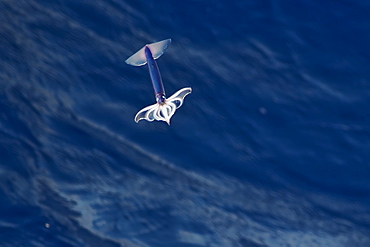
Flying Squid Species in mid-air (Ommastrephes bartramii). Extremely rare unusual image. South Atlantic Ocean. MORE INFO: Flying Squid use membranes between their tentacles (visible on pic) & two fins at the rear of the mantle to glide through the air in a similar way to flying fish. These unique adaptations allow them to avoid predation more easily. Ommastrephid squids are among the strongest swimmers in the Cephalopoda. A number of species are fished commercially. This particular species (Ommastrephes bartramii), is commonly known as "Neon Flying Squid" due to its colouration and its ability to glide over the ocean surface as seen in the photographs. Please note that this is a genuine image of a wild animal in its natural environment. It is not a digital manipulation.
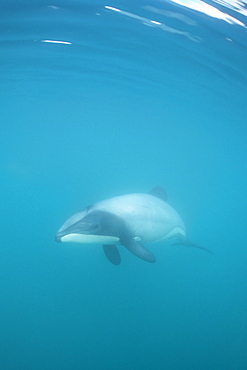
Hector's dolphin (Cephalorhynchus hectori) approaching camera, showing characteristic dorsal fin.
Akaroa, New Zealand.
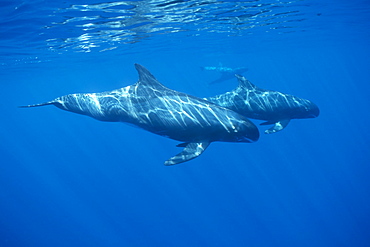
Pygmy killer whale (Feresa attenuata) travelling pod in dappled light, sowing characteristic long pectoral fins.
Hawaii.
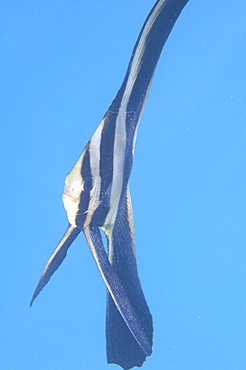
tallfin batfish (platax teira), juvenile, wild, day, marine protected area, diving off Coral Bay, Ningaloo reef, Western Australia, Indian Ocean. MORE INFO: with 3 dark bars, very long dorsal, anal and pelvic fins, feed on plankton from water column.
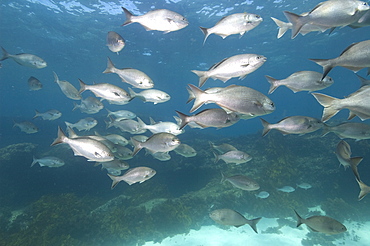
Western buffalo bream (kyphosus cornelii) silvery brown colour, feeding on seaweed, schools, wild, day, silvery brown colour, marine protected area, diving off Rottnest Island, Western Australia, Indian Ocean. MORE INFO: other name buff bream, lacks the dark edging on the tail fin and dark line under the eye. Restricted to WA as name suggests.
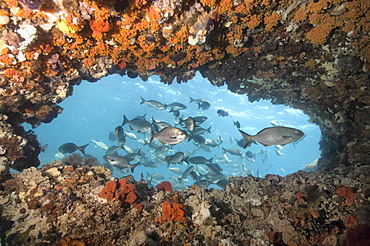
Western buffalo bream (kyphosus cornelii) silvery brown colour, feeding on seaweed, schools, wild, day, silvery brown colour, marine protected area, diving off Rottnest Island, Western Australia, Indian Ocean. MORE INFO: other name buff bream, lacks the dark edging on the tail fin and dark line under the eye. Restricted to WA as name suggests.
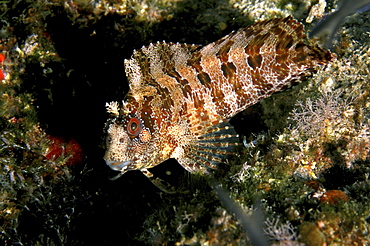
Tompot blenny (Blennius gattorugine) close up.
Babbacombe, Torquay, South Devon, UK
Restricted Resolution (please contact us) (RR)
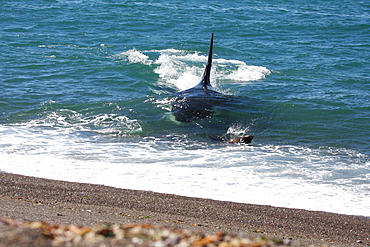
Mel, the Killer Whale or Orca (Orcinus orca) narrowly misses out on a South American Sea Lion (Otaria flavescens) that it was hunting, in Patagonia. Of the 18 only 7 have mastered the stranding behaviour whereby the Orca enters the shallow surf to feed on Sea Lion pups. Distinctive by his 2 metre dorsal fin, Mel is an expert hunter who feeds on Sea Lion pups before taking them back to his pod. This lucky Sea Lion however managed to escape the hunter's attentions.
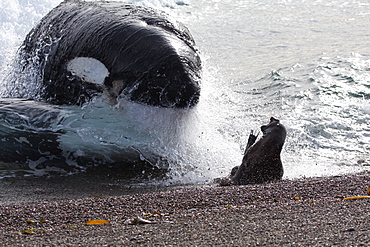
Mel, the Killer Whale or Orca (Orcinus orca) narrowly misses out on a South American Sea Lion (Otaria flavescens) that it was hunting, in Patagonia. Of the 18 only 7 have mastered the stranding behaviour whereby the Orca enters the shallow surf to feed on Sea Lion pups. Distinctive by his 2 metre dorsal fin, Mel is an expert hunter who feeds on Sea Lion pups before taking them back to his pod. This lucky Sea Lion however managed to escape the hunter's attentions.

Mel, the Killer Whale or Orca (Orcinus orca) narrowly misses out on a South American Sea Lion (Otaria flavescens) that it was hunting, in Patagonia. Of the 18 only 7 have mastered the stranding behaviour whereby the Orca enters the shallow surf to feed on Sea Lion pups. Distinctive by his 2 metre dorsal fin, Mel is an expert hunter who feeds on Sea Lion pups before taking them back to his pod. This lucky Sea Lion however managed to escape the hunter's attentions.
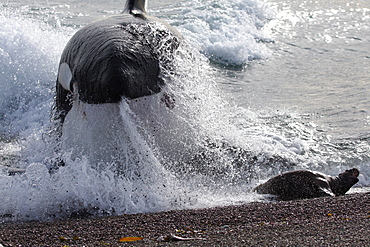
Mel, the Killer Whale or Orca (Orcinus orca) narrowly misses out on a South American Sea Lion (Otaria flavescens) that it was hunting, in Patagonia. Of the 18 only 7 have mastered the stranding behaviour whereby the Orca enters the shallow surf to feed on Sea Lion pups. Distinctive by his 2 metre dorsal fin, Mel is an expert hunter who feeds on Sea Lion pups before taking them back to his pod. This lucky Sea Lion however managed to escape the hunter's attentions.
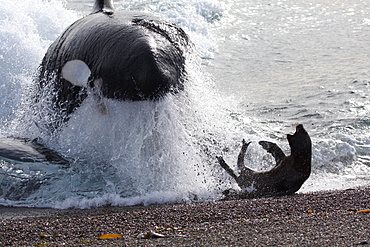
Mel, the Killer Whale or Orca (Orcinus orca) narrowly misses out on a South American Sea Lion (Otaria flavescens) that it was hunting, in Patagonia. Of the 18 only 7 have mastered the stranding behaviour whereby the Orca enters the shallow surf to feed on Sea Lion pups. Distinctive by his 2 metre dorsal fin, Mel is an expert hunter who feeds on Sea Lion pups before taking them back to his pod. This lucky Sea Lion however managed to escape the hunter's attentions.
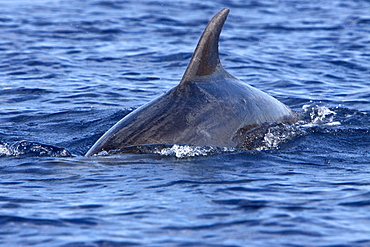
A small pod of bottlenose dolphins (Tursiops truncatus) surfacing of the west coast of the Island of Maui, Hawaii, USA. Pacific Ocean.

Pygmy killer whale (Feresa attenuata) travelling pod in dappled light, sowing characteristic long pectoral fins.
Hawaii.
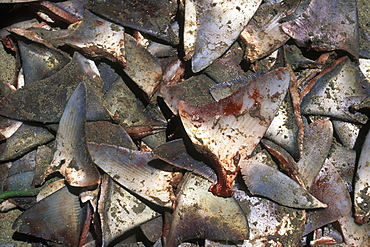
Shark dorsal fins cut from various species in the Shark Finning panga fishery in the Gulf of California (Sea of Cortez), Mexico.

Adult fin whale (Balaenoptera physalus) sub-surface feeding in the rich waters off the continental shelf on the west side of Spitsbergen Island in the Barents Sea, Norway
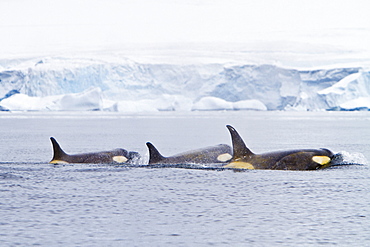
A small pod of about 25 "Type B" killer whales (Orcinus orca) near the Antarctic Peninsula, Antarctica, Southern Ocean
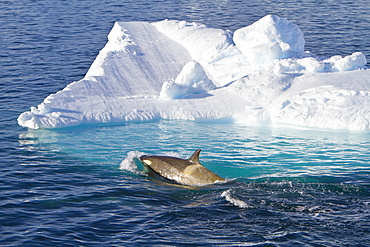
A large pod of 25 to 45 Type B killer whales (Orcinus nanus) in Paradise Bay, Antarctica, Southern Ocean
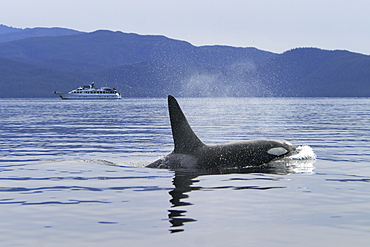
Adult Orca bull - also called Killer Whale - (Orcinus orca) surfacing near whale watching yacht in the calm waters of Southeast Alaska, USA.
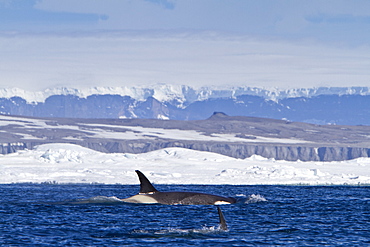
A small pod of 8 Type B killer whales (Orcinus nanus) in pack ice near Snow Hill Island Island, Weddell Sea, Antarctica, Southern Ocean
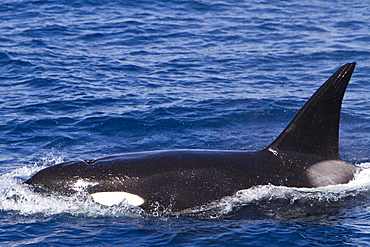
A pod of 15 to 20 killer whales (Orcinus orca) off Cabo Corso at 248 37.9?N 1128 13.1?W Baja California Sur, Mexico, Pacific Ocean
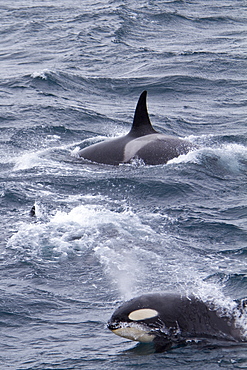
A small pod of about 10 killer whales (Orcinus orca) in the Gerlache Strait near the Antarctic Peninsula, Antarctica, Southern Ocean
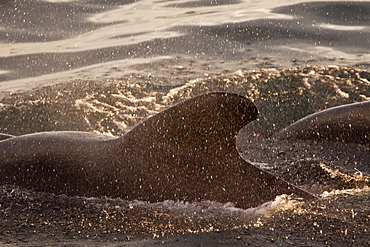
Short-finned pilot whale (Globicephala macrorhynchus) surfacing off Isla San Pedro Martir, Gulf of California (Sea of Cortez), Baja California Norte, Mexico
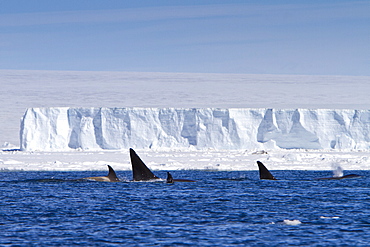
A small pod of 8 Type B killer whales (Orcinus nanus) in pack ice near Snow Hill Island Island, Weddell Sea, Antarctica, Southern Ocean
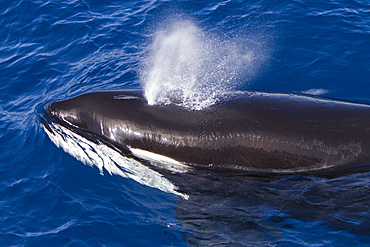
A pod of 15 to 20 killer whales (Orcinus orca) off Cabo Corso at 24�ï�¿�½�Ã�¸ 37.9?N 112�ï�¿�½�Ã�¸ 13.1?W Baja California Sur, Mexico, Pacific Ocean
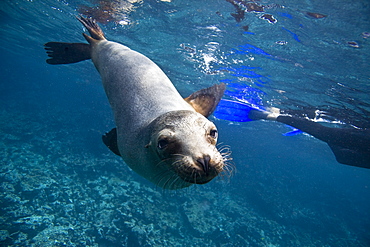
Galapagos sea lion (Zalophus wollebaeki) underwater in the Galapagos Island Group, Ecuador. Pacific Ocean.
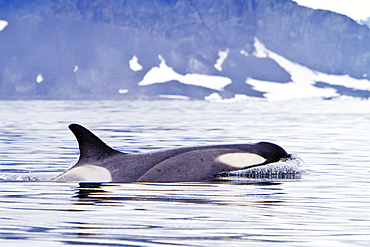
A small pod of about 25 "Type B" killer whales (Orcinus orca) south of the Antarctic Circle near the Antarctic Peninsula, Antarctica, Southern Ocean
